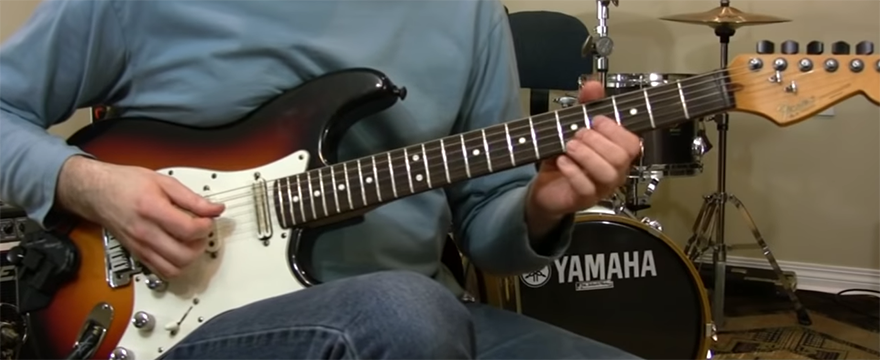Improvisation is certainly a specialized skill to be able to truly master, but yet most guitar players will experiment with improvising from very early on. This post is an overview of the subject and discusses the three most critical areas of improvisation; theoretical knowledge, memorization of pre-learned licks and lines, and the value of practicing melodic composition.
Q (1). I have my scales down, but my soloing sucks when my friends and I jam on the weekends. I know my keys alright and I have a knowledge about major and minor but I still can’t make a good lead. I need help.
– Christopher, Hawaii
Q (2). I’ve played guitar for eight years. I know my scales and some techniques, but I just can’t use them to improvise a good solo. A lot of things are still too difficult and there is just no progression in my playing. What am I doing wrong?
– Leon, Netherlands
A: When it comes to learning how to perform guitar improvisation there are three areas that every musician needs to work on.
1). KNOWLEDGE OF THE FINGERBOARD:
The first area is scale and arpeggio knowledge on the guitar fingerboard, (keep in mind that if the scales are only studied mechanically /physically, then a guitarist will still have difficulty with improvising).
SCALES:
The following scales are important to learn:
- Major Scale
- Natural Minor
- Major Pentatonic
- Minor Pentatonic
- The Blues Scale
- Harmonic Minor
ARPEGGIOS:
The following arpeggios are important to learn:
- Major Triad
- Major 7th
- Minor Triad
- Minor 7th
- Diminished Triad
- Dominant 7th
- Minor 7(b5)
Along with the list given above, it goes without saying that there are other important scales and arpeggios that should also be practiced as time goes on.
However, it is important to keep in mind that once the list of scales and arpeggios (above) is developed to a high degree, a majority of the most common musical situations in music will be able to be covered melodically.
As more complex musical styles and musical situations arise, additional work and additional effort will be necessary in order to cover any advanced situations.
2). LICKS and LINES:
Every guitar player who has an interest in improvisation needs to spend time learning and practicing melodic guitar licks and phrases that are composed by other musicians.
Both lead guitar and melodic instrumental guitar parts are important to practice, because even if a guitarist only wanted to play a solo once in awhile, they would still require a working knowledge of pre-learned licks and lines.
If a guitarist does not have a collection of pre-learned licks and lines (that they can work into their own playing), it would be very difficult to spontaneously phrase together ‘well connected’ flowing musical ideas.
3). COMPOSING:
The time that is spent working out melodic ideas using scales, arpeggios and musical motifs is one the most important periods of study for the practicing improviser.
When a guitar player spends practice time working on composing their own (original) licks and lines, the end result is a development of the players heightened sense of awareness for how easily their ear and fingers can work together to be able to more easily perform musical phrases.
Composition is different from a guitar player practicing the subject area of “Ear Training.” Although these two areas of study are certainly similar, Ear Training practice is more directly focused on being able to discern, associate and recognize the correct names for musical sounds, (as opposed to composing which is more about the direct reproduction of musical phrases that we hear in our mind).
Composing original licks (that will eventually become ‘personalized’ guitar licks), will help a guitar player more easily work out original melodic ideas across chord progressions.
Working at composition will help with the development of forming well connected melodic statements for use across underlying chord progressions.
When a guitarist studies composing melody (of any kind), they train their ear to follow the musical contour of sound that is heard within their mind.
Sometimes, musicians will call this type of practice, “connecting their fingers to what they hear in their head.”
CONCLUSION:
When a guitar player dedicates enough practice time to learning the fingerboard, developing licks and lines as well as, composing original melodic ideas, they will be well on their way to being able to improvise.
Once a guitar player’s practice plan starts becoming more organized and the underlying chord progressions being studied start to become more complex, the guitarist can start to pursue more advanced areas of musical improvisation.
Advanced areas can include improvising topics such as; modes, scale blending (modal interchange), and non-diatonic phrasing.
- Click the button below to download the lesson handout
(access to lesson material will require a FREE membership)
